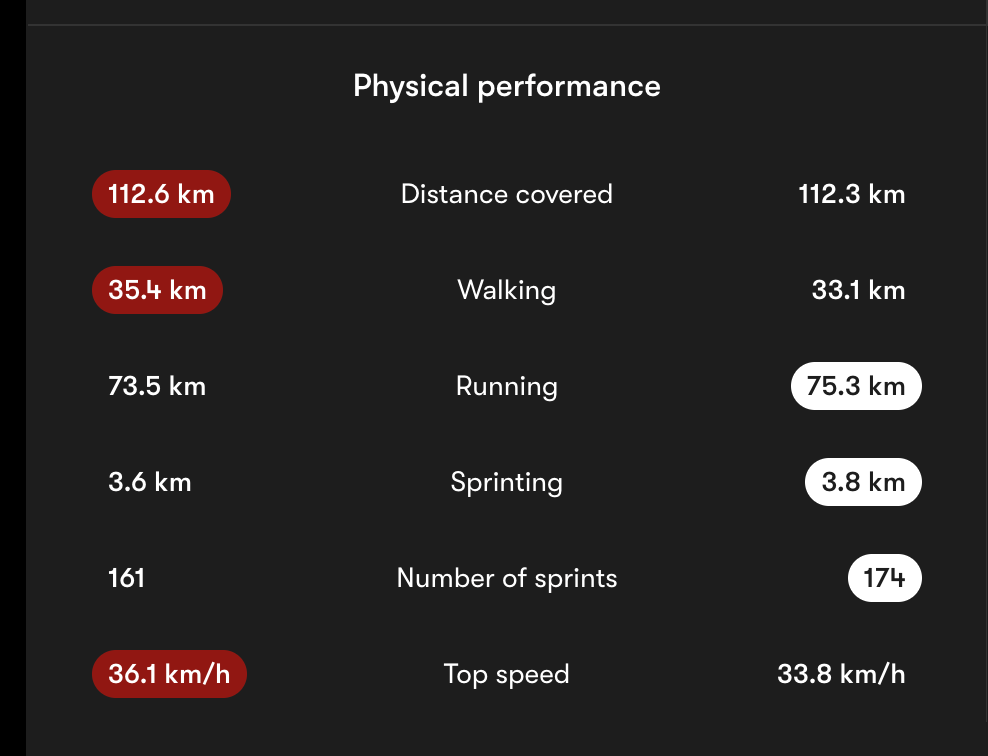How to Use Physical Data from Fotmob & Sofascore
A new season of football has begun which means more data to comb over and use in our analysis!
Just recently, Fotmob and Sofascore released physical data for the Premier League, which is a great addition in being able to understand some of the physical aspects of the game.
These have been aggregated up so we can get some cool stats on both player and team performances.
Let’s get into some of these and how we can use them to better understand performance and attributes.
1. Distance Covered
Indicator of work rate and how active a player is during a match.
Context matters: a midfielder typically covers more ground than a striker or center back.
This also doesn’t necessarily correlate with how effective a player is in a match.
Someone could be doing a lot of running, but if that has no purpose and they are running around like a headless chicken and not impacting the match at all that’s not great.
This can also be used for gauging fitness and fatigue at the player level, especially when used over a longer time frame.
2. Top Speed
Shows explosive pace potential, useful for wingers, full-backs, and strikers.
Important in counterattacks, defensive recovery runs, and 1v1 duels.
Not always needed in every position (a holding midfielder rarely needs top-end sprinting).
3. Number of Sprints
Indicates explosiveness and stamina.
It can be more useful than just raw distance covered since decisive moments (pressing, creating space, chasing an opponent) often come from short bursts.
Physical stats give a picture of work rate, athleticism, and playing style, but they must be combined with technical (passing, dribbling, shooting) and tactical (positioning, decision-making) data to be meaningful.
They’re most useful for:
Fitness tracking
Injury prevention
Comparing intensity levels between players
Understanding tactical roles (e.g., high pressing vs. low block)
These data points are great for incorporating into your analysis.
It’s always important to remember to try to get a full picture with physical data as covering more ground might not always be positive.
If you are interested in getting started with football analytics and python, I built the Complete Football Analytics in Python course which is the course I wish I had when learning about python and football.
McKay


